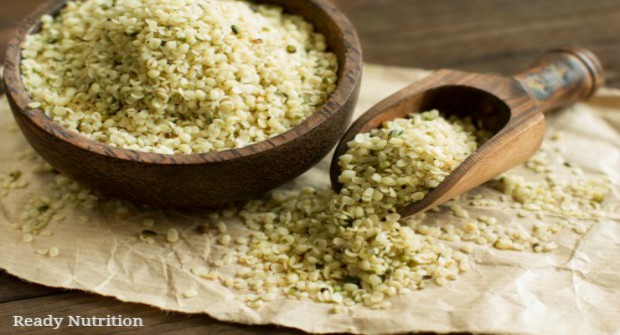Preparedness is more than a method of planning, it is a lifestyle. Long-term survival strategies are most effective when they are incorporated into one’s daily life. Anybody who seeks to be prepared for the future should be prepared to live out their plans in the present, even if the only purpose is to understand the efficacy of their plans. Food preparedness stands paramount as the most fundamental element of any long-term survival plan, and it is important that your preparations for long-term food storage are efficacious and simple.
Food Preparedness
As impending socioeconomic collapse fast approaches, many of the commercially available storable foods have risen in popularity, and for good reason, but many of these so-called foods are pre-packaged freeze-dried meals, powders or just plain mush that are intended to sit in storage for up to 2 years. Consequently, these foods contain a high amount of sodium and/or preservatives to maintain their shelf life; they are designed only “for emergency” and not as a nutritional food that could be eaten in one’s daily regimen today. Over time, many of the storable foods that people rely on, especially canned foods, contain meat which will putrefy and cause all other food in the package to spoil. How likely is it that these foods will sustain your survival and nutritional needs when the time comes?
The food you choose to store should be something that you are comfortable eating today, and it should be providing what you need to stay healthy.
What You Need
These are the basic requirements that a food should have for long-term survival:
- It must be inexpensive.
- It must have the capacity for long-term storage (Check out these 25 must-have survival foods)
- It must be a calorie-dense food that yields significant nutritional benefits.
- It must have a number of uses so that it can be incorporated into your diet today.
When searching for the best long-term survival food, the one food that seems to match every basic quality mentioned above is seeds. There are various seeds which are substantially inexpensive as compared with many of the other commercially available long-term food storage products on the market, and they are perfect for long-term storage if they are stored correctly. Here we will discuss two highly nutritious and widely available seeds and give you a number of ideas as to how you can use them in your diet now.
Chia Seeds
Salvia hispanica, also known as chia, is a member of the mint family and is native to Southern Mexico and Guatemala. The seed of this plant was once a staple food for Inca, Maya and Aztec civilizations. Chia seeds are considered a complete protein because they contain all 9 essential amino acids: isoleucine, leucine, lysine, methionine, phenylalanine, threonine, tryptophan, valine, and histadine. They are also a great source of omega-3 ALA fatty acids, which have been shown to prevent cardiovascular disease when converted to omega-3 EPA and DHA in the body. One tablespoon of chia seeds provides approximately 2.5 grams of omega-3 fatty acids. They are also a good source of cholesterol-lowering soluble fiber and lignans which have shown a potential role in cancer prevention. These seeds provide 80 calories per tablespoon, and they would serve as a highly efficacious way to obtain sufficient calories if there is ever a food supply shortage as a result of a natural or unnatural disaster.
Chia seeds are highly absorbent; they will absorb up to 12 times their weight in water. They are best eaten after being soaked in a liquid of some kind, where they will soak up moisture and form a gel-like consistency. Once soaked, they could be added to a number of beverages or foods. They are commonly added to fruit drinks. Another easy way to consume eat chia seeds is to add them to cereal or to add them to a fruit jam and spread them on toast. They do not have a very strong taste, so they will tend to taste like whatever you mix them with.
Hemp Seeds
The hemp plant, also known as cannabis sativa, has been used by humans for over 10,000 years for industrial and commercial uses, such as the creation of clothing, rope, paper, fabric, biofuel, biodegradable plastic, paint, and food. The seed of the hemp plant is full of nutrition, and it could possibly be the ultimate survival food. In addition, to be a complete protein source, hemp seeds are a particularly good source of omega-3 and omega-6 fatty acids, but hemp seeds actually have almost twice the omega-3 content as chia. Hemp provides 4.5 grams of omega-3 fatty acids and 90 calories per tablespoon.
Hemp seeds have a subtle, nutty flavor, and they taste great when added to a shake. Similarly to chia, they can be added to a cereal or spread on toast with jam. They also taste great when added to a salad.
Storage
Both chia and hemp seeds can last up to two years if stored properly. Preparing a cool, dry place will be necessary for any long-term storage strategy. A cellar would make an ideal location, because it is underground and undisturbed by household heating systems, however, for those who do not have underground storage available, a refrigerator will do just fine. The amount you need to store will be dependent on how many people are in your home and how much space you have. The best idea is to store at least two-weeks-worth of seeds at any given time to ensure long-term survival.




